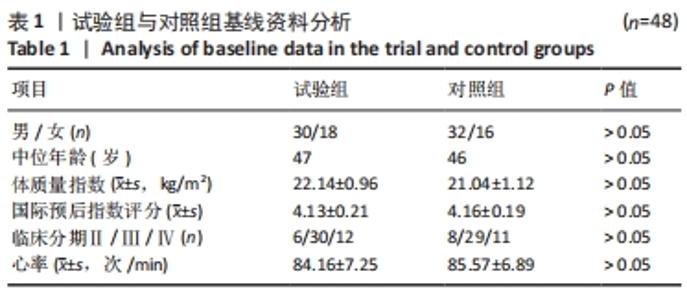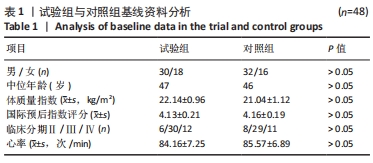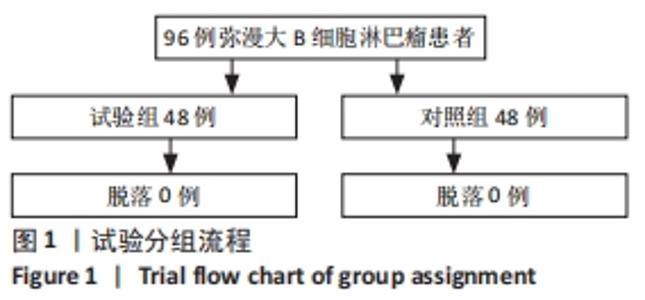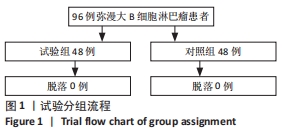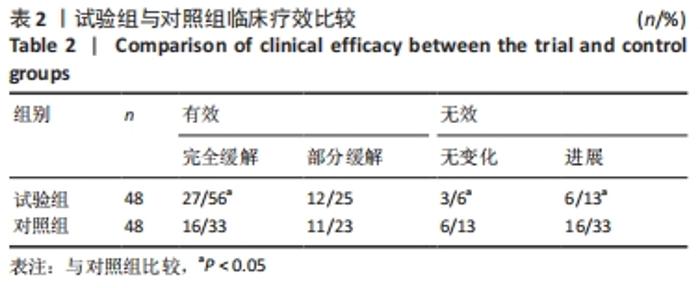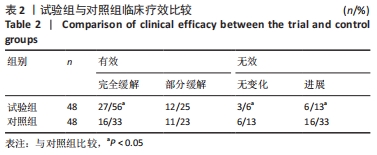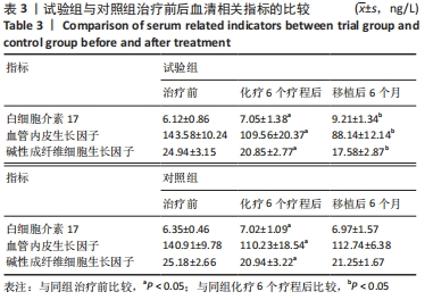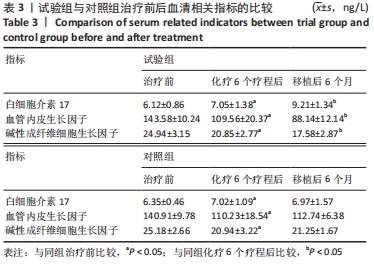[1] ENNISHI D, HSI ED, STEIDL C, SCOTT DW. Toward a New Molecular Taxonomy of Diffuse Large B-cell Lymphoma. Cancer Discov. 2020;10(9): 1267-1281.
[2] CROMBIE JL, ARMAND P. Diffuse Large B-Cell Lymphoma and High-Grade B-Cell Lymphoma: Genetic Classification and Its Implications for Prognosis and Treatment. Hematol Oncol Clin North Am. 2019;33(4): 575-585.
[3] HARRINGTON F, GREENSLADE M, TALAULIKAR D, et al. Genomic characterisation of diffuse large B-cell lymphoma. Pathology. 2021; 53(3):367-376.
[4] WRIGHT CM, KOROULAKIS AI, BARON JA, et al. Palliative Radiotherapy for Diffuse Large B-cell Lymphoma. Clin Lymphoma Myeloma Leuk. 2021;21(10):650-658.
[5] BOBILLO S, JOFFE E, LAVERY JA, et al. Clinical characteristics and outcomes of extranodal stage I diffuse large B-cell lymphoma in the rituximab era. Blood. 2021;137(1):39-48.
[6] SPINNER MA, ADVANI RH. Current Frontline Treatment of Diffuse Large B-Cell Lymphoma. Oncology (Williston Park). 2022;36(1):51-55.
[7] AL-JUHAISHI T, AL-KINDI SG. Outcomes of cardiac diffuse large B-cell lymphoma (DLBCL) in the rituximab era. Int J Cardiol. 2021;339:146-149.
[8] ANSELL SM, MINNEMA MC, JOHNSON P, et al. Nivolumab for Relapsed/Refractory Diffuse Large B-Cell Lymphoma in Patients Ineligible for or Having Failed Autologous Transplantation: A Single-Arm, Phase II Study. J Clin Oncol. 2019;37(6):481-489.
[9] DORAISWAMY A, SHAH MR, BANNERJI R. Immunotherapies Old and New: Hematopoietic Stem Cell Transplant, Chimeric Antigen Receptor T Cells, and Bispecific Antibodies for the Treatment of Relapsed/Refractory Diffuse Large B Cell Lymphoma. Curr Hematol Malig Rep. 2021;16(1):72-81.
[10] PARTANEN A, TURUNEN A, VALTOLA J, et al. Mobilization characteristics, blood graft composition, and outcome in diffuse large B-cell lymphoma after autologous stem cell transplantation: Results from the prospective multicenter GOA study. Transfusion. 2021;61(2):516-525.
[11] PIERPONT TM, LIMPER CB, RICHARDS KL. Past, Present, and Future of Rituximab-The World’s First Oncology Monoclonal Antibody Therapy. Front Oncol. 2018;8:163.
[12] ISHIKAWA E, TANAKA T, SHIMADA K, et al. A prognostic model, including the EBV status of tumor cells, for primary gastric diffuse large B-cell lymphoma in the rituximab era. Cancer Med. 2018;7(7):3510-3520.
[13] CHAHOUD J, SUI D, ERWIN WD, et al. Updated Results of Rituximab Pre- and Post-BEAM with or without (90)Yttrium Ibritumomab Tiuxetan during Autologous Transplant for Diffuse Large B-cell Lymphoma. Clin Cancer Res. 2018;24(10):2304-2311.
[14] 曹俊杰,陆滢,马俊霞,等.利妥昔单抗联合自体外周血干细胞移植治疗中高危及复发弥漫大B细胞淋巴瘤的疗效观察[J].现代实用医学,2016,28(12):1556-1557.
[15] YU QJ, CHEN YS, ZENG DF, et al. Clinical Efficiency of Rituximab Combined with Autologous Hematopoietic Blood Stem Cell Transplantation for Treatment of CD20(+) B non.Hodgkin Lymphoma. Zhongguo Shi Yan Xue Ye Xue Za Zhi. 2021;29(1):77-85.
[16] 沈悌,赵永强.血液病诊断及疗效标准[M].4版.北京:科学出版社,2018.
[17] PATRASCU AM, NACEA J, PATRASCU Ş, et al. Therapeutic Options in Diffuse Large B-Cell Lymphoma - A Retrospective Study and Review of the Literature. Curr Health Sci J. 2017;43(3):269-274.
[18] PATRASCU AM, STREBA L, PATRASCU Ş, et al. Correlation between Immunohistochemical Subtype and Clinicopathological Features in Patients with Diffuse Large B-cell Lymphoma. Curr Health Sci J. 2017; 43(3):253-257.
[19] 任振华.通过选择性免疫治疗克服淋巴瘤抗体治疗耐药性的研究[D].北京:中国科学院大学,2016.
[20] 姚忠强,贺启华,李炜,等.R-EPOCH方案治疗复发或难治性弥漫大B细胞淋巴瘤的临床观察及安全性评价[J].临床内科杂志,2018, 35(2):107-108.
[21] 董中明.利妥昔单抗注射液联合化疗治疗B细胞非霍奇金淋巴瘤的效果评价[J].中外医学研究,2018,16(8):61-62.
[22] 刘飞飞,刘阳,王彦,等.中国弥漫性大B细胞淋巴瘤患者行R-CHOP化疗方案和CHOP化疗疗效和安全性比较的Meta分析[J].海峡药学,2018,30(4):90-93.
[23] GREENBAUM AM, GREEN DJ, HOLMBERG LA,et al. Bendamustine, etoposide, and dexamethasone to mobilize peripheral blood hematopoietic stem cells for autologous transplantation in non-Hodgkin lymphoma. Blood Res. 2018;53(3):223-226.
[24] BRIONES J, NOVELLI S, GARCÍA-MARCO JA, et al. Autologous stem cell transplantation after conditioning with yttrium-90 ibritumomab tiuxetan plus BEAM in refractory non-Hodgkin diffuse large B-cell lymphoma: results of a prospective, multicenter, phase II clinical trial. Haematologica. 2014;99(3):505-510.
[25] GALIMBERTI S, GUERRINI F, MORABITO F, et al. Quantitative molecular evaluation in autotransplant programs for follicular lymphoma: efficacy of in vivo purging by Rituximab. Bone Marrow Transplant. 2003;32(1):57-63.
[26] 胡桂芳,冯艳凌,王美颖,等.利妥昔单抗免疫化疗联合自体外周血干细胞移植治疗CD20+B细胞性非霍奇金淋巴瘤的临床疗效及其护理配合[J].海南医学,2014,24(18):2799-2801.
[27] 彭翠翠,刘林,文静.利妥昔单抗联合APBSCT治疗B细胞性非霍奇金淋巴瘤的临床研究[J].重庆医学,2014,43(28):3718-3721.
[28] LI X, BECHARA R, ZHAO J, et al. IL-17 receptor-based signaling and implications for disease. Nat Immunol. 2019;20(12):1594-1602.
[29] ZHAO J, CHEN X, HERJAN T, et al. The role of interleukin-17 in tumor development and progression. J Exp Med. 2020;217(1):e20190297.
[30] WANG X, CHEN H, JIANG R, et al. Interleukin-17 activates and synergizes with the notch signaling pathway in the progression of pancreatic ductal adenocarcinoma. Cancer Lett. 2021;508:1-12.
[31] SONG Y, YANG JM. Role of interleukin (IL)-17 and T-helper (Th)17 cells in cancer. Biochem Biophys Res Commun. 2017;493(1):1-8.
[32] XIANG T, LONG H, HE L, et al. Interleukin-17 produced by tumor microenvironment promotes self-renewal of CD133+ cancer stem-like cells in ovarian cancer. Oncogene. 2015;34(2):165-176.
[33] HE D, LI H, YUSUF N, et al. IL-17 promotes tumor development through the induction of tumor promoting microenvironments at tumor sites and myeloid-derived suppressor cells. J Immunol. 2010;184(5):2281-2288.
[34] DU JW, XU KY, FANG LY, et al. Interleukin-17, produced by lymphocytes, promotes tumor growth and angiogenesis in a mouse model of breast cancer. Mol Med Rep. 2012;6(5):1099-1102.
[35] BENCHETRIT F, CIREE A, VIVES V, et al. Interleukin-17 inhibits tumor cell growth by means of a T-cell-dependent mechanism. Blood. 2002; 99(6):2114-2121.
[36] LI J, YAN K, YANG Y, et al. Interleukin-17 promotes mouse hepatoma cell proliferation by antagonizing interferon-γ. Nan Fang Yi Ke Da Xue Xue Bao. 2019;39(1):1-5.
[37] FABRE J, GIUSTINIANI J, GARBAR C, et al. Targeting the Tumor Microenvironment: The Protumor Effects of IL-17 Related to Cancer Type. Int J Mol Sci. 2016;17(9):1433.
[38] WAKITA D, SUMIDA K, IWAKURA Y, et al. Tumor-infiltrating IL-17-producing gammadelta T cells support the progression of tumor by promoting angiogenesis. Eur J Immunol. 2010;40(7):1927-1937.
[39] HIRAHARA N, NIO Y, SASAKI S, et al. Inoculation of human interleukin-17 gene-transfected Meth-A fibrosarcoma cells induces T cell-dependent tumor-specific immunity in mice. Oncology. 2001;61(1):79-89.
[40] ZHONG W, ZHU Z, XU X, et al. Human bone marrow-derived mesenchymal stem cells promote the growth and drug-resistance of diffuse large B-cell lymphoma by secreting IL-6 and elevating IL-17A levels. J Exp Clin Cancer Res. 2019;38(1):73.
[41] 钟伟杰,李庆山,陈钊,等.利妥昔单抗治疗前后弥漫大B细胞淋巴瘤患者Th17细胞及相关细胞因子的变化[J].白血病·淋巴瘤, 2012,21(12):732-735,741.
[42] 范磊,徐卫,李建勇.弥漫大B细胞淋巴瘤预后新指标[J].中国实用内科杂志,2015,35(2):81-84.
|
